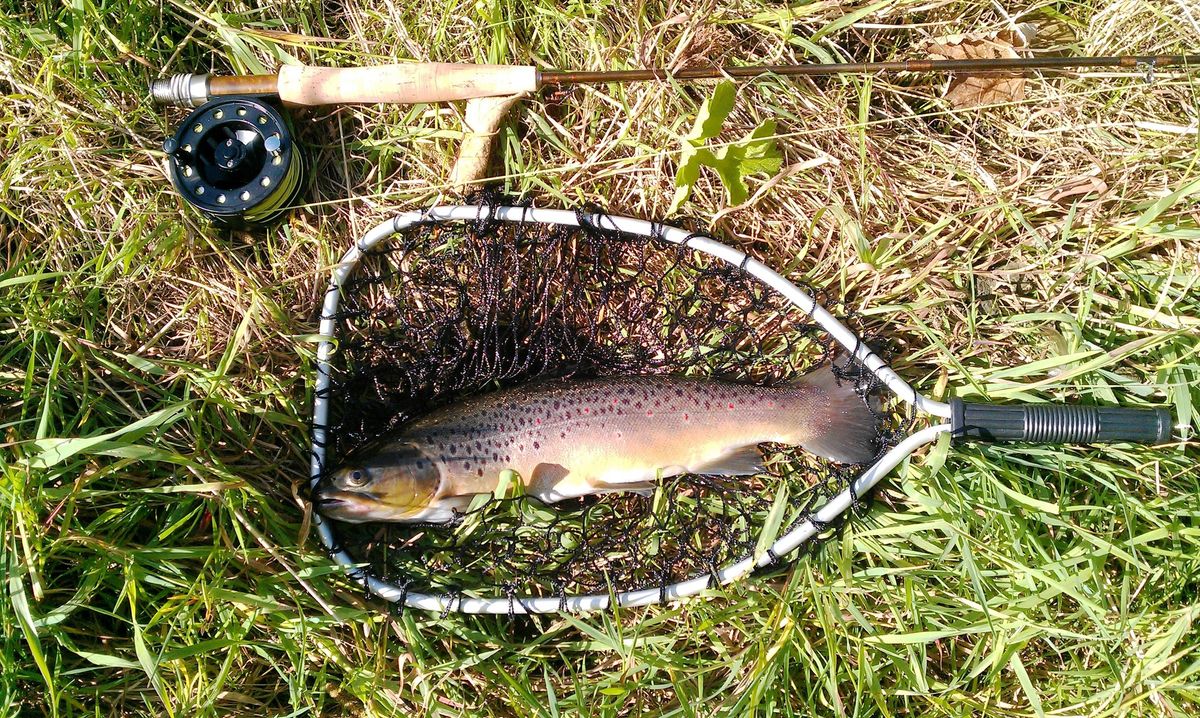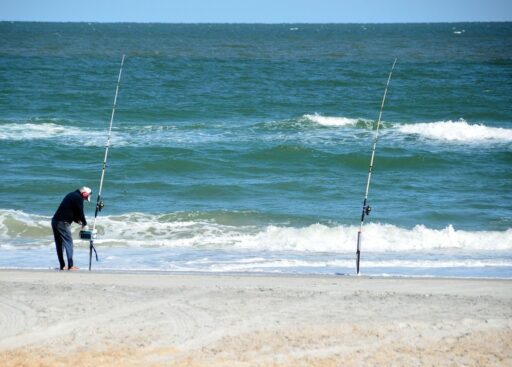In the realm of fly fishing, the choice of rod can be a defining element of the experience. Amidst a world of high-tech gear, the wooden fly fishing rod, particularly those crafted from bamboo, stands as a testament to tradition and craftsmanship. This article delves into five compelling reasons why a wooden fly fishing rod can not only enhance your angling adventures but also connect you to the sport’s storied past. From the tactile joy of using handcrafted equipment to the shared narratives within the angling community, here’s how embracing the wooden rod can transform your approach to fly fishing.
Key Takeaways
- Wooden fly fishing rods offer a tangible link to the sport’s history, enriching the angling experience with traditional gear.
- The craftsmanship in creating a wooden rod, from material selection to construction, adds a layer of artistry to the sport.
- Using a wooden rod encourages a slower, more mindful approach to fishing, fostering a deeper connection with the environment.
- Choosing a wooden rod is a way to honor fly fishing’s heritage, preserving time-honored techniques and stories.
- Wooden rods facilitate community and sharing, allowing anglers to partake in a collective experience that transcends the individual catch.
1. Explore Traditional Gear

Stepping into the realm of traditional fly fishing gear is like opening a door to the past. Dive into the world of bamboo rods, silk lines, and horsehair leaders; these tools not only offer a unique tactile connection to fly fishing’s history but also enrich your experience on the water.
The process of crafting bamboo rods is as rewarding as the outcome, providing lessons in patience and perseverance. Traditional gear often requires a gentler touch and a more nuanced understanding of the water, inviting anglers to deepen their connection with nature.
Embrace the slow, deliberate approach that traditional gear encourages. This not only enhances the joy of the sport but also connects you more deeply with the environment and the art of angling.
Challenge yourself with a new set of challenges and rewards by fishing with traditional equipment. It’s an opportunity to grow as an angler and experience the sport in a new light.
2. Craftsmanship Matters

The art of creating a wooden fly fishing rod is a testament to the dedication and skill of the craftsman. Each rod is a piece of art, shaped and finished by hand, ensuring a unique experience for the angler. The meticulous construction processes of bamboo rods not only provide a functional tool but also an object of beauty that stands as a tribute to the angler’s passion for the sport.
The careful selection of materials and the artisan’s touch in crafting each rod make every cast a connection to the tradition of fly fishing.
Understanding the craftsmanship involved in building a wooden fly fishing rod can deepen your appreciation for the sport. Here are some key aspects to consider:
- The choice of wood, often bamboo, for its flexibility and strength
- The precision required in tapering the rod to achieve the desired action
- The artistry of wrapping the guides and finishing the rod with a protective varnish
By choosing a handcrafted wooden rod, you’re not just purchasing a tool; you’re investing in a legacy of angling excellence.
3. Embrace the Slow

In the fast-paced world we live in, fly fishing with a wooden rod offers a much-needed respite. Fishing with traditional gear encourages a slower, more deliberate approach, enhancing the joy of the sport and deepening your connection with the environment. This mindful practice is not just about the catch; it’s about the rhythm of the cast, the flow of the river, and the dance of the fly on the water.
The process of fly fishing with a wooden rod is as rewarding as the outcome, offering lessons in patience and perseverance.
Embracing the slow is also about valuing the nuances that come with traditional angling techniques. Here are a few aspects to consider:
- Seek Knowledge: Learn about the history and craftsmanship behind traditional fly fishing gear.
- Value Patience: Whether you’re crafting your own rod or waiting for the perfect catch, patience is a virtue.
- Connect with Nature: Traditional gear often requires a gentler touch and a more nuanced understanding of the water.
- Challenge Yourself: Fishing with traditional equipment offers new challenges and rewards, allowing you to grow as an angler.
4. Preserve the Heritage

Engaging with traditional fly fishing practices is a way to honor and preserve the sport’s rich history. It’s about more than catching fish; it’s about keeping alive the stories and techniques that have been passed down through generations. The meticulous construction processes of bamboo rods are not just about the end product but also about the journey of creation that connects us to the past.
- The significance of preserving fly fishing traditions
- Insights into the craftsmanship of rod building
- The potential for bamboo rods in modern fly fishing
- The concept of a community-shared bamboo rod
By preserving the heritage of fly fishing, we maintain a tangible link to the sport’s origins and ensure that the knowledge and beauty of traditional angling methods continue to thrive. Participating in community initiatives, such as the bamboo rod share program, offers a unique opportunity to connect with other anglers, share stories, and be part of a larger narrative within the fly fishing community.
Seeking knowledge about the history and craftsmanship behind traditional gear adds depth to your fishing adventures. Pass it on—teaching others about the beauty of fishing with bamboo rods ensures that these cherished traditions continue for future generations.
5. Share the Experience

Fly fishing with a wooden rod is not just a solitary pursuit; it’s a tradition that thrives on sharing knowledge and experiences. By participating in community initiatives, such as the bamboo rod share program, you become part of a collective narrative that enriches the sport for everyone involved.
When you share the experience of angling with a wooden rod, you’re not only passing on a piece of history but also fostering a sense of camaraderie within the community.
For those who cherish the heritage of fly fishing, teaching others about the beauty of fishing with bamboo rods is a way to grow as an angler and ensure these traditions continue. Below is a list of ways to share your passion for traditional fly fishing gear:
- Participate in local fly fishing clubs and events.
- Engage in mentorship programs to teach newcomers.
- Share your stories and tips online, encouraging others to contribute.
- Connect with fellow enthusiasts through social media platforms like Instagram.
Remember, every story shared is a thread that weaves into the larger tapestry of fly fishing history. So, take a moment to review the best rod and reel combos, share your fishing experience, and become a part of something greater than the sum of its parts.
Conclusion
In conclusion, embracing a wooden fly fishing rod is not just about adopting a piece of equipment; it’s about immersing oneself in the rich tapestry of angling history and craftsmanship. From the tactile joy of handling meticulously constructed bamboo rods to the deeper connection with nature and the sport’s heritage, wooden rods offer a unique and enriching experience. The slow, deliberate approach they encourage is a refreshing counterpoint to the fast-paced world, allowing anglers to savor each moment on the water. By preserving these traditions and sharing them with others, we ensure that the artistry and stories of fly fishing continue to inspire generations to come. Whether you’re a seasoned angler or new to the sport, consider the profound impact a wooden fly fishing rod can have on your experience—it might just transform the way you view and engage with the world of angling.
Frequently Asked Questions
What makes a wooden fly fishing rod different from modern rods?
Wooden fly fishing rods, particularly those made of bamboo, offer a unique tactile connection to the sport’s history. They are handcrafted with meticulous attention to detail, which can provide a different feel and experience compared to modern carbon fiber or graphite rods.
How does using a wooden rod change the fly fishing experience?
Using a wooden rod encourages a slower, more deliberate approach to fishing. It connects anglers more deeply with their environment and the art of angling, offering a meditative and traditional experience.
Why is craftsmanship important in the construction of a fly fishing rod?
Craftsmanship is crucial because it ensures the rod is built with precision and care, using the best materials. This results in a high-quality, durable rod that can enhance the angling experience and last for generations.
How does embracing traditional gear contribute to preserving fly fishing heritage?
Embracing traditional gear like bamboo rods, silk lines, and horsehair leaders helps to honor and preserve the rich history of fly fishing. It keeps alive the stories and techniques that have been passed down through generations.
Can traditional wooden rods be used in modern fly fishing applications?
Yes, traditional wooden rods can be used in modern fly fishing applications. While they are often associated with trout fishing, skilled craftsmen can design bamboo rods suitable for various species, including in saltwater environments.
What are the benefits of participating in a community-shared bamboo rod program?
Participating in a community-shared bamboo rod program allows anglers to connect with others, share stories, and be part of a larger narrative within the fly fishing community. It also provides access to traditional gear without the initial investment of owning a rod.





